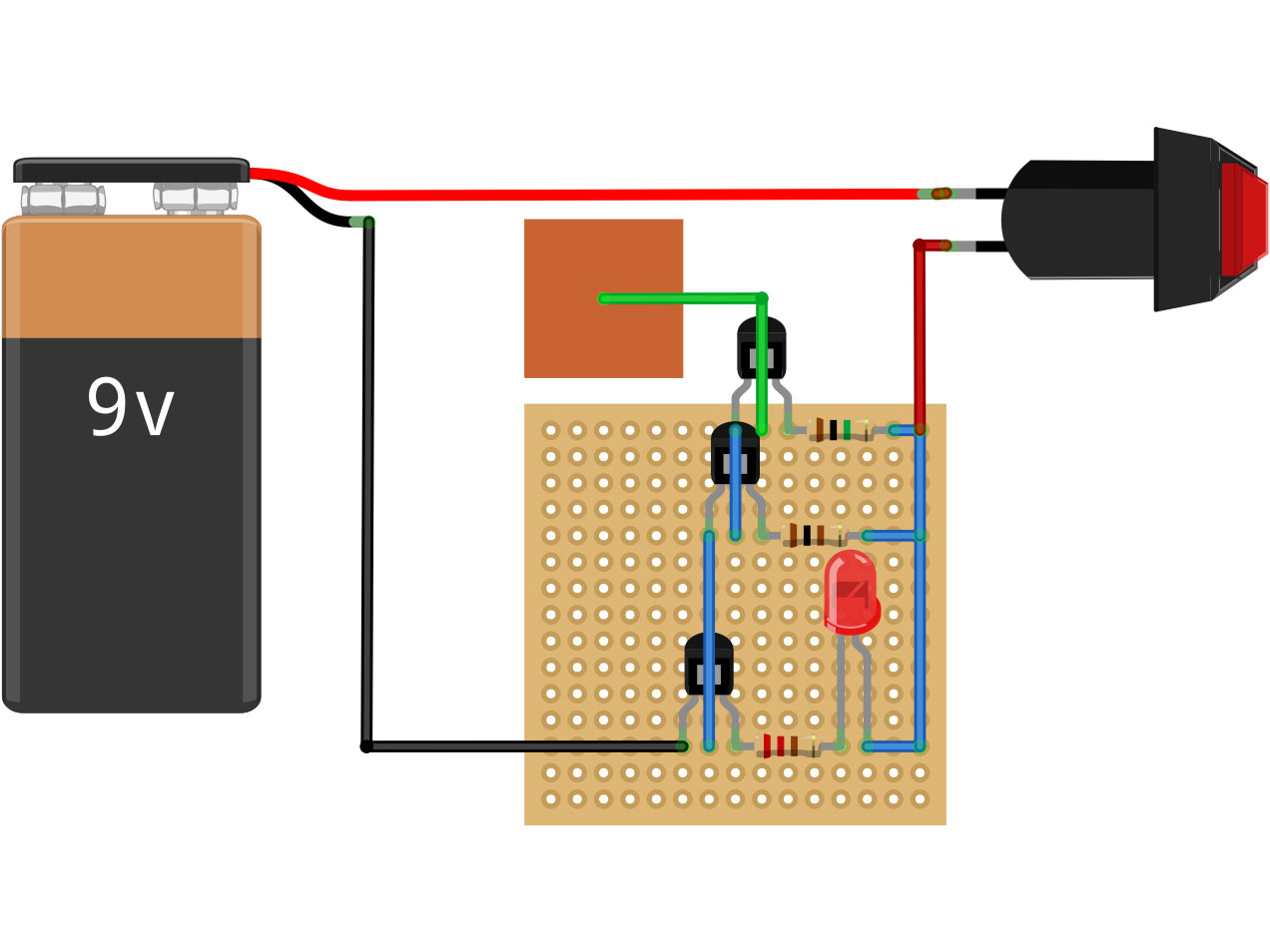A transistor is an electrical component that functions, most basically, as a switch — in principle not so different from a light switch. Instead of a physical movement, however, a transistor is controlled by a flow of electricity. And unlike your basic light switch, a transistor can be on, off, or somewhere in between.
Most transistors have three connections: one for current in, one for current out, and one that controls the “switch.” The current flowing through a transistor can be larger than the current controlling it, so it can become an amplifier: Connect the input to a power source (like a battery), and the control lead to a weak signal (like a guitar pickup), and the output will sound like the control signal, only louder. Just how much louder depends on a lot of things, but a factor of 200 is routine. This number is called gain.
If you use the output from one transistor to control another, the gains multiply. With two transistors, the ideal gain becomes 200 × 200 = 40,000, and with three transistors (as in this circuit), 200 × 200 × 200 = 8,000,000! That huge gain lets you use it to detect the tiniest movements of electricity — even those created at a distance by induction or static charge!





